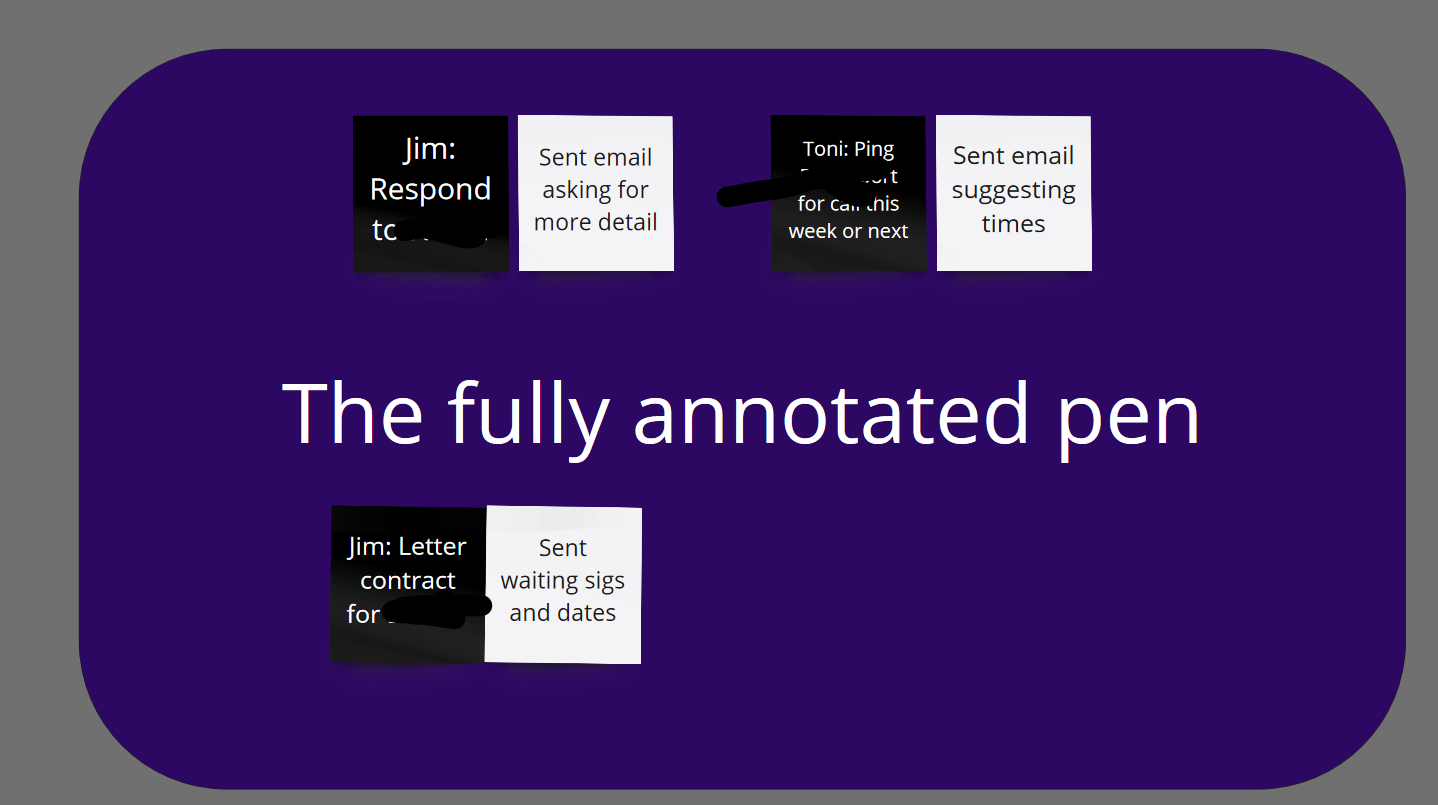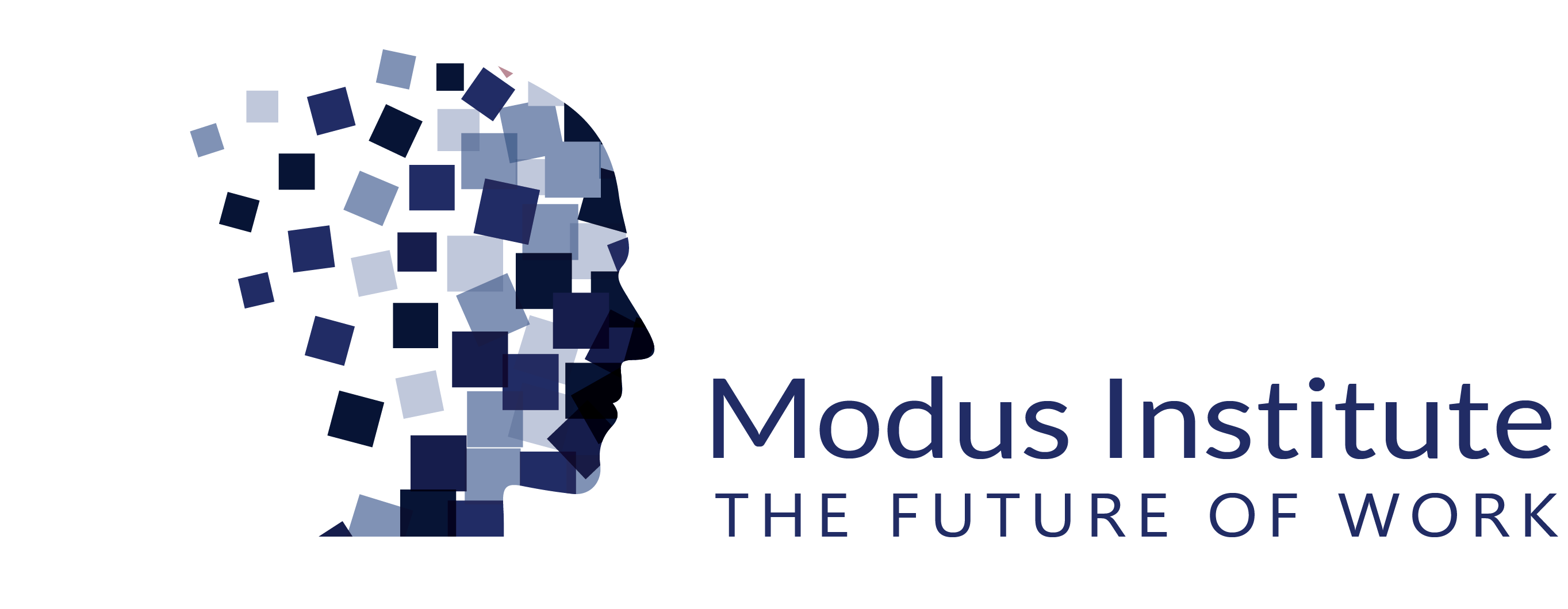Always Evolving Obeya - BubbleBahn
Jul 19
/
Jim Benson
The group of us at Modus have to create new content, take public speaking engagements, teach students, work with clients, and improve our work.
This means the nature of our work changes regularly. A few weeks ago we were completely focused on a particular client, this week we have been contracting and (as this blog post is evidence) creating content. We are constantly making decisions independently and together around the things we are creating.
Our Obeya allows us to use a variety of visual controls to have professional asynchronous conversations that happen where the work is visualized.
This means the nature of our work changes regularly. A few weeks ago we were completely focused on a particular client, this week we have been contracting and (as this blog post is evidence) creating content. We are constantly making decisions independently and together around the things we are creating.
Our Obeya allows us to use a variety of visual controls to have professional asynchronous conversations that happen where the work is visualized.
This means they aren’t getting lost in slack, email, text messages, teams, google docs, or any of the other places we routinely lose things.
This board allows us to track projects (Improvements to LAVM, Newsletters, blog posts, podcasts, etc.) and daily work (In the BubbleBahn).
The BubbleBahn is what I’d like to talk about today.
This board allows us to track projects (Improvements to LAVM, Newsletters, blog posts, podcasts, etc.) and daily work (In the BubbleBahn).
The BubbleBahn is what I’d like to talk about today.
Exploring BubbleBahn as Part of Our Obeya
Here we have the BubbleBahn, which you can see is part of the larger Obeya above. This is a topical, directed, collaborative, and emotive Personal Kanban that is tracking daily work through our team.
Some things to note right off the bat.
Collaborative “Doing”: The action happening in the named bubbles shows Allan, Dave, Jim, and Toni working on things, like a traditional kanban. However some of the tickets overlap the bubbles. Those are collaborative tasks where Jim and Toni, Dave and Jim, or Allan and Jim are working on things together.
Showing the true collaborative nature of this work has helped us remember simple things like scheduling time together when we are in our huddle. Dave and Allan especially end up negotiating their day because of the intricacy of their shared work. We have found this recognition of collaborative need to be sorely lacking in almost every kanban we have ever seen.
At Modus, a core principle is the avoidance of Task Hording - this is one person taking responsibility for a task and finishing it without someone else taking a look at it or being involved with it. Task hoarding is like becoming what we call a “micro-silo.” All the problems teams have in siloing are fully present when we take work and do it alone.
Waiting for Pull / Dependent Tasks: We have work that follows a sequence, but we don’t have enough of that work to require full on swim lanes. We have tasks that are waiting for pull and tasks that are simply waiting for that work to be done. Keeping that visual and obvious on the Obeya means every time we look at the board we know that work is coming up and we anticipate how we will respond. This saves time in planning because the work isn’t hidden in a backlog or an overloaded options column.
Focus: Each week we have a primary focus for the week. We always have tasks that do not relate to the focus, but each focus has a goal. Those goals help guide the work we select. Quite often the goals visualized on the Obeya allow us to find kaizen tasks or even something as mundane as bookkeeping that help achieve the goal.
Some things to note right off the bat.
Collaborative “Doing”: The action happening in the named bubbles shows Allan, Dave, Jim, and Toni working on things, like a traditional kanban. However some of the tickets overlap the bubbles. Those are collaborative tasks where Jim and Toni, Dave and Jim, or Allan and Jim are working on things together.
Showing the true collaborative nature of this work has helped us remember simple things like scheduling time together when we are in our huddle. Dave and Allan especially end up negotiating their day because of the intricacy of their shared work. We have found this recognition of collaborative need to be sorely lacking in almost every kanban we have ever seen.
At Modus, a core principle is the avoidance of Task Hording - this is one person taking responsibility for a task and finishing it without someone else taking a look at it or being involved with it. Task hoarding is like becoming what we call a “micro-silo.” All the problems teams have in siloing are fully present when we take work and do it alone.
Waiting for Pull / Dependent Tasks: We have work that follows a sequence, but we don’t have enough of that work to require full on swim lanes. We have tasks that are waiting for pull and tasks that are simply waiting for that work to be done. Keeping that visual and obvious on the Obeya means every time we look at the board we know that work is coming up and we anticipate how we will respond. This saves time in planning because the work isn’t hidden in a backlog or an overloaded options column.
Focus: Each week we have a primary focus for the week. We always have tasks that do not relate to the focus, but each focus has a goal. Those goals help guide the work we select. Quite often the goals visualized on the Obeya allow us to find kaizen tasks or even something as mundane as bookkeeping that help achieve the goal.

The Fully Annotated Pen: The pen “column” is as old as Personal Kanban, it’s in the Personal Kanban book. This version is interesting in that we’ve annotated everything in the box. Let’s zoom in for this one…
This annotated pen has the items waiting in black and what we are waiting for in white. In an online kanban tool the detail would be buried in the ticket requiring us to click on each one to find out what was going on. For this, we see immediately on the Obeya what is waiting, for who and why. Next steps are either clear or implied. This saves time and allows the team to help when others of us are away.
This annotated pen has the items waiting in black and what we are waiting for in white. In an online kanban tool the detail would be buried in the ticket requiring us to click on each one to find out what was going on. For this, we see immediately on the Obeya what is waiting, for who and why. Next steps are either clear or implied. This saves time and allows the team to help when others of us are away.
Let's Talk
If you have a done “column”, that is your post-it crematorium. That’s where your work goes to die. While we have our Done section, we also have Let’s Talk, which is where we can see, again fully annotated, what we should talk about in our huddles / kaizen events / retrospectives. What work can teach us lessons for the future? Again, the column itself is something we’ve talked about for years. In the interactive obeya, it is a conversation piece with details. What has this meant? It’s meant that we, as individuals, see the ticket and its note, and we start to process that as new information immediately. We aren’t waiting around for a regularly scheduled moment of permission to improve.
Again, the Obeya is providing real-time information about the decisions being made and the issues being confronted.
The BubbleBahn here becomes a superhighway of relevant information with an incredibly small footprint. Relevance, immediacy, and triggers for action are a key part of our current Obeya.
Again, the Obeya is providing real-time information about the decisions being made and the issues being confronted.
The BubbleBahn here becomes a superhighway of relevant information with an incredibly small footprint. Relevance, immediacy, and triggers for action are a key part of our current Obeya.


We are an online educational platform that helps professionals and aspiring individuals to succeed in their goals.
Copyright © 2025